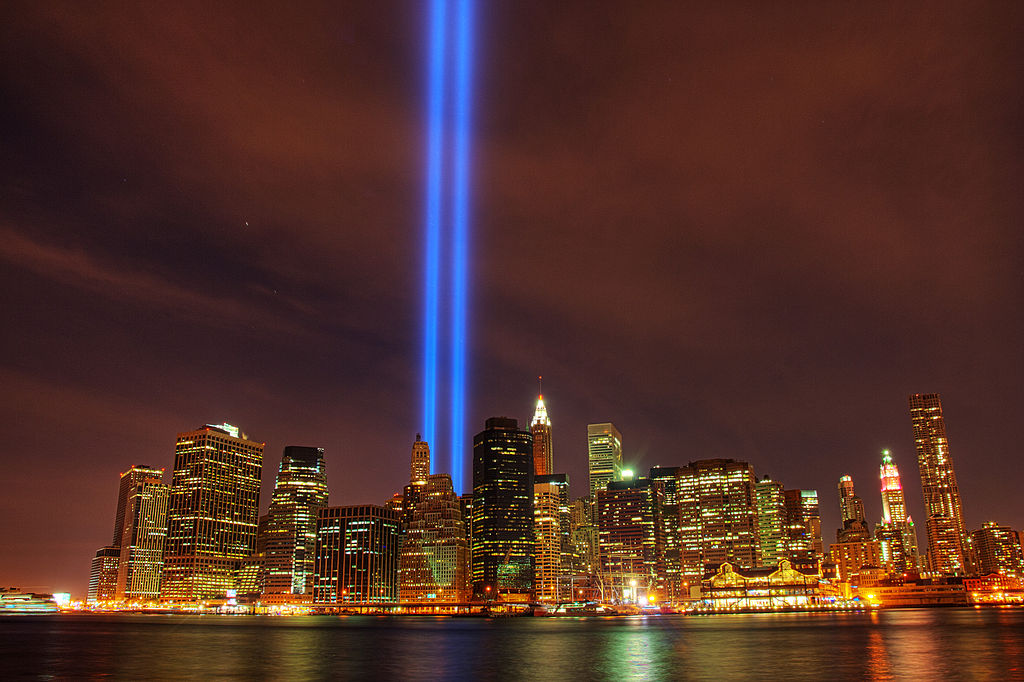
Bird Migration Dramatically Altered by High-intensity Urban Light Installation

By: Meg Schader for the International Dark-Sky Association
Tribute in Light in New York City projects two beams of light into the sky as an annual memorial to the victims of 9/11. The tribute also occurs during peak bird migration in North America. Recognizing a unique opportunity, a team of scientists and volunteers gathered each year at the memorial on September 11 since 2005 to study the effects of high intensity lights on bird migration.
In 2008, the team began using radar and acoustic sensors to monitor bird activity in and around the site. On the study night in 2010, a particularly high density of birds seemed to be trapped within the perimeter of the illumination. The team convinced the memorial managers to turn the lights off for 20 minutes and the birds quickly dispersed.
In the years since, memorial operators have continued to shut the lights off when high counts of birds were observed. This created an opportunity to study the difference between having the lights on and off at the site, so the scientists compiled data they had collected between 2008 and 2016 to analyze the contrast. The study consists of data from 7 non-consecutive years, excluding data from 2 years when it was raining.
According to the recently published study, “High-intensity urban light installation dramatically alters nocturnal bird migration,” the lights at the tribute were shut down for about 20 minutes at a time, for a total of 22 times on the nights of the study between 2010 and 2017. The contrast between the high-intensity light and no light allowed the researchers “to directly contrast birds’ behaviors during adjacent dark and illuminated periods.”
The findings from the study confirm what IDA has long thought to be the case for such high-intensity outdoor light installations. It has been previously documented that birds are attracted to bright lights. High-intensity artificial lights along migration routes attract and disorient birds, disrupting their progress. (See also: Seabird Fatalities Caused by Artificial Lights)
This is exactly what the researchers found at the Tribute in Light. They measured more than 20 times the density of birds near the memorial than in surrounding areas. The birds spent long periods circling inside of the cone of illumination and they vocalized frequently. This meant that they were using precious energy, but not making any progress on their migration routes. Some died of exhaustion, while others collided with nearby buildings.
The Tribute in Light is a unique installation that beams light up to four miles above the ground, yet some of the study findings can be applied to all artificial light at night (ALAN). For instance, one of the key observations of the study is that “short-term removal of ALAN eliminated its disruptive effects almost instantaneously.”
An article on the Discover Magazine blog noted, “Beyond the unique natural experiment, the researchers also say the Tribute in Light offers a lesson in addressing the larger problem of light pollution. If conservationists and memorial organizers can work together at such an emotionally charged site, then other cities should be able to find solutions.” IDA hopes that the study will be useful to communities lobbying for the prevention of light pollution.
While there is much more to learn about the effects of artificial light at night, IDA appreciates that this study proves that limiting the duration of lights has a demonstrable benefit. Turning the lights off does what we think it does, which is protecting the night sky for birds and other nocturnal creatures.

















